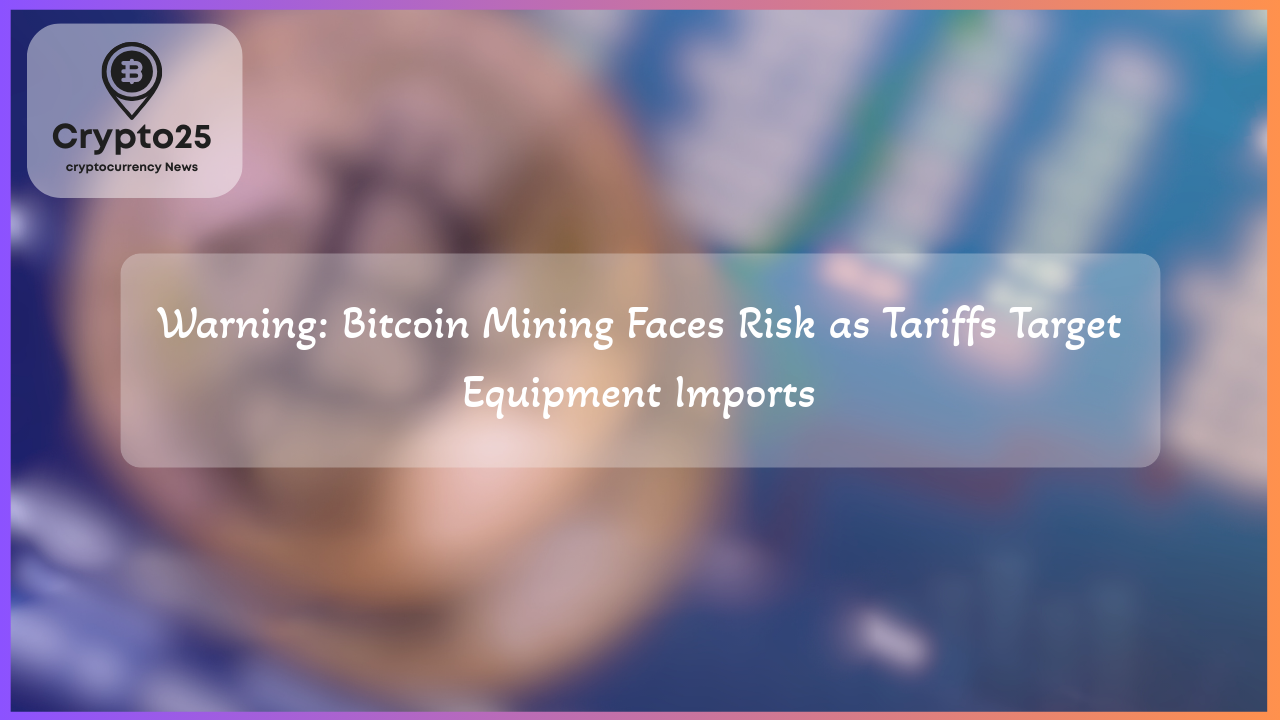
The global Bitcoin mining industry is at a crossroads as U.S. tariffs on imported mining equipment push operational costs higher. With these rising expenses, driven by new economic policies, American miners are weighing their options for maintaining profitability. Industry experts believe this shift could lead to significant changes in the global distribution of Bitcoin mining activity, potentially altering the competitive landscape of cryptocurrency mining.
## How U.S. Tariffs Impact Bitcoin Mining Equipment Costs
The recent U.S. tariff hikes on imported goods have introduced a significant challenge for Bitcoin miners. As of April 9, new data highlights the rising costs for American miners relying heavily on hardware imported from leading Asian manufacturers, such as those in China, Malaysia, and Indonesia. These economies are now subject to a minimum 24% import tariff on mining rigs and related equipment. According to Jaran Mellerud, CEO of Hashlabs Mining, this makes U.S.-based operations at least 22% more expensive compared to those in other countries.
The situation worsens when considering the specific impact of tariffs from China, which recently saw rates increase by a staggering 50%. This brings the total cost for miners purchasing hardware from Chinese suppliers to a 104% export premium. Even lower-tariff regions like Malaysia present challenges, as U.S. imports often rely on a diverse mix of global suppliers. These substantial cost increases are forcing U.S. miners to evaluate the long-term economic feasibility of their operations.
| Title | Details |
|---|---|
| Market Cap | $1.2 Trillion |
| Chinese Tariff Rate | Up to 104% |
| Minimum Tariff Rate | 24% |
Despite the ongoing struggles, there is a temporary relief in the form of an equipment stockpile within the U.S. However, these supplies are limited, and upon depletion, new hardware imports will force miners to pay premiums between 22% and 36%. Ethan Vera, CEO of Luxor Mining, echoed these findings, emphasizing the need for companies to adapt their investment strategies in response to this evolving dynamic.
## Bitcoin Mining Industry Faces Growth Uncertainty Amid Rising Costs
The mounting expenses for U.S. miners have sparked widespread concerns about the industry’s ability to sustain growth. Gadi Glikberg, CEO of CodeStream, noted that while these tariffs may not immediately result in an exodus of miners, the increased costs could hinder expansion plans. Given the already narrow profit margins in cryptocurrency mining, any rise in hardware prices directly impacts operational feasibility and return on investment (ROI).
“These tariffs force miners to reassess their strategy, balancing operational scales against dwindling profit margins,” said Glikberg. While large-scale mining firms may have the financial resilience to absorb such shocks, smaller players are likely to struggle or even shutter operations. This scenario is creating ripple effects across the U.S. market, forcing many companies to put expansion on hold.
Additionally, some firms have chosen a proactive stance in light of tariff uncertainties. For example, Synteq Digital, a mining equipment brokerage company led by CEO Taras Kulyk, rushed orders and deliveries ahead of the latest tariff enforcement. However, such measures offer only a short-term fix and are unsustainable as tariffs remain in effect.
## The Offshore Shift in Bitcoin Mining May Gain Momentum
With U.S.-based Bitcoin miners combating rising tariffs, attention is shifting toward offshore markets as potential alternatives. Countries with lower operating costs and lenient import policies, such as Kazakhstan, Russia, and parts of Africa, may attract more miners seeking cost-saving opportunities. This offshore migration could alter the global share of mining activity, decentralizing Bitcoin further and distributing energy demands across new regions.
Moreover, cheaper and more accessible equipment in non-tariffed economies incentivize miners to move their operations offshore. These shifts not only raise questions about the competitive standing of U.S. miners but also about how changes in mining activities might impact blockchain network decentralization and global environmental concerns related to energy consumption. For investors and stakeholders in the crypto space, understanding these dynamics will prove essential for navigating future industry trends.
As the U.S. reevaluates its trade and import policies, the global Bitcoin mining landscape may see a redistribution of its key players. While the current tariffs serve as a hurdle for domestic miners, they also offer opportunities for emerging players in less restrictive markets. The coming months will be critical in determining how these shifts shape the long-term trajectory of Bitcoin mining and the broader crypto ecosystem.
